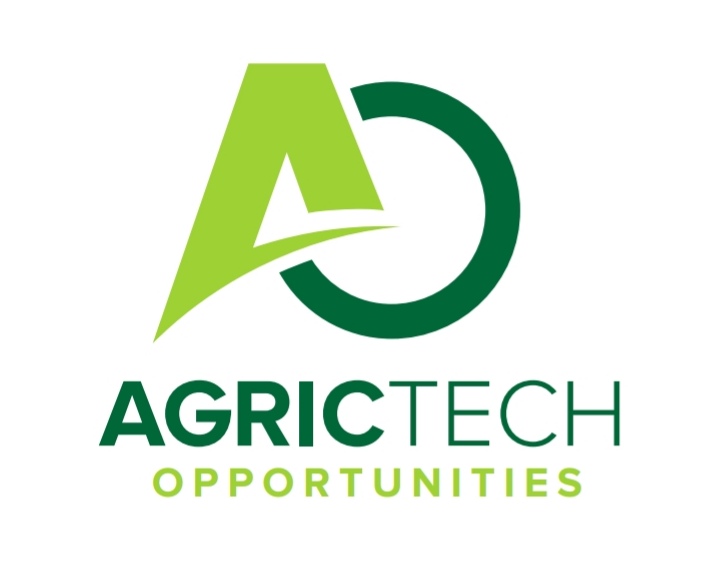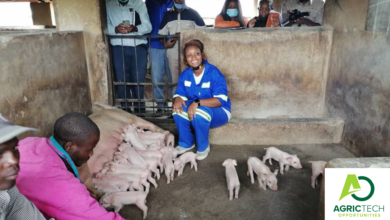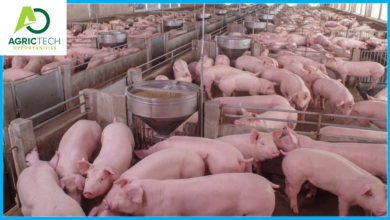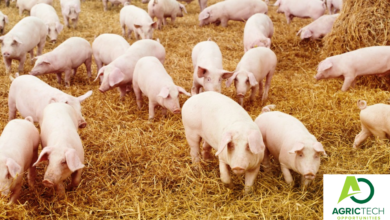Top Principles Of Pig Nutrition For 2023/24
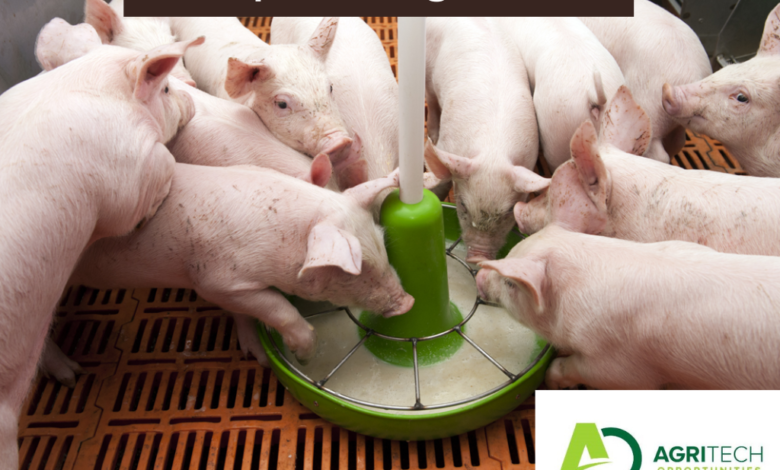
Host Country
GLOBAL
Target Audience
INTERNATIONAL (GLOBAL)
Program Overview
Top Principles of Pig nutrition- Key issues to look at are genetics, management, health, record-keeping, and nutritional advances. One significant aspect of productivity is sow nutrition. To achieve optimum performance, nutrition and management must be evaluated at each stage of the reproductive cycle. Formulation of farm specific diets for the breeding herd requires knowledge of genetic potential, body condition scoring, nutrient needs, and feed intake.
The primary purpose of providing nutrients to pigs is to grow lean and fatty tissues and supporting skeletal and visceral organs, to initiate and maintain pregnancy, and to resource the synthesis of milk. All facets of sow productivity impacts another subsequent period in the life cycle.
ALSO CHECK: Starting Your Own Dairy Enterprises And Becoming A Dairy Farmer In South Africa
The nutrition and feeding topics to be discussed will be:
1)Dry Sow mgt, the boar to maximize semen quality and quantity,
2)replacement gilt development to ensure longevity,
3)gestation feeding patterns,
4)feeding during the re-breeding period,
5)maximizing lactation feeding intake and piglet nutrition.
Feeding the Sow During Gestation
Feed allowance of 2 kg/d/sow consisting of about 12.9 MJ ME/kg DM and 13-15% CP
Older (parity 2 and greater) females probably only require a 12 to 13 % crude protein diet (0.6% total lysine, 0.9% Ca, 0.8% total P, and 0.45% available P).
The body fat content should be closely monitored
gestation diet needs to control weight gain as well as provide enough nutrients to support fetal development.
excessive body condition or low-fat reserves will cause reduced feed intake in lactation and long WTOI
Feeding the Sow During Gestation
an increased level of feed intake during early gestation (d 0 to 30) has been associated with an increase in early embryonic mortality,
The energy and protein requirement of a sow gestation depends on her size (maintenance), how much weight she puts on during gestation and the requirements of the developing litter. During pregnancy, maintenance represents about 80% of the sow’s total energy requirements, about 15% goes to maternal weight gain and the remaining 5% of the energy goes to litter growth.
Feeding the Sow During Gestation
Weigh sows, measure backfat or use condition scoring as guide to an appropriate feeding program. Preferred program – weigh sows and measure backfat (P2) at the time of breeding. Backfat is taken at a point at the last rib about 65 mm from the mid-back – this is called a P2 measurement.
Backfat can be checked at monthly intervals throughout gestation to insure reaching a target backfat of 18 mm P2 at parturition. The ideal time to put body fat on underconditioned females is during d 30 to 70 of gestation.
Feeding a sow during gestation
Increasing the dietary protein intake between d 75 and 105 d of gestation does not benefit mammary development, and increasing the dietary energy intake is detrimental to the development of mammary secretory tissue.
However, it has been suggested that increased feed intake during the last weeks of gestation will increase pig birth weights as well as, stretched the stomach making it easier to maximize the feed intake during lactation.
The incorporation of dietary fat the last 10 to 14 days of gestation should improve pig survival, particularly in litters with low birth weights. If feed intake is too high during gestation that lactation feed intake will decrease and impact subsequent reproductive performance.
Pattern of Feeding During Gestation
Under nutrition in early gestation has to be very severe to reduce embryo survival. In contrast, high levels (>2.5 kg feed/day) of feed intake in early gestation will reduce embryo survival of gilts by approximately 5%. Cerisuelo et al., 2009. Increased sow nutrition during midgestation affects muscle fiber development and meat quality, with no consequences on growth performance.
Nutrient requirements of sows increase with an advance in pregnancy, following the pattern of fetal development and increase in sow weight. Under nutrition in early gestation has to be very severe to reduce embryo survival. In contrast, high levels (>2.5 kg feed/day) of feed intake in early gestation will reduce embryo survival of gilts by approximately 5%.
Replacement Female / Gilt Mgt
Primiparous sows require nutrients for growth in addition to the demands for development of the conceptus and, post-partum, for milk production.
They need an extra 10 to 15 % (2.5 to 3 kg of feed per day) to compensate for their physical protein growth needs.
A gestation diet containing 14 % crude protein diet (0.7% total lysine, 0.9% Ca, 0.8% total P, and 0.45% available P) will be adequate for first parity females that are compensating for both muscle and fetal growth.
Explanation for low feed intake:
High insulin and low glucagon levels may reduce nutrient mobilization from body tissues and thus, increase appetite of the sows. Provide adequate nutrients for the development needed to prepare the breeding female for a long life of pig rearing.
Diets for gilts should contain higher concentrations of Vitamin A, Vitamin E, calcium (Ca), phosphorus (P), selenium (Se), copper (Cu), and zinc (Zn) for future reproductive purposes and to enhance the passive immune response.
Dietary concentrations of Ca and P – for maximum bone mineralization and can be later mobilized if fetal and lactation demands exceed dietary nutrient intake.
Lactation
Aim to max milk prdctn and minimize body weight losS. The lactation diet for highly prolific breeds will be formulated to contain a minimum concentration of 17.5 % crude protein, 13 MJ ME/kg DM, 0.9 to 1.0 % total lysine, 0.9 % Ca, 0.8 % total P, and 0.5 % available P.
Dietary nutrients are often insufficient to support milk production during lactation, especially in primiparous sows. Sows are able to adapt to this situation by mobilizing nutrients from body tissues. (Kim, 1999)
During lactation period, sows are expected to recover from farrowing, maximize milk production, Feed 2kgs of feed plus 0.5 kg per every piglet. For highly, prolific sows, nutrients from body tissue reserves and feed are used to support lactation. This results in loss of body weight (negative nutrient balance).
Excessive body weight loss – lead to short-term reproductive problems e.g WTOI. Solution – Increase feed intake and/or increasing nutrient concentration in the lactation diet. Lactation feed intake impacts subsequent weaning to service interval, farrowing rate, litter size and litter weight gain. lactating females to reach ad libitum feed intake in approximately 3 to 5 days post-farrowing by following a gradual step-up feeding program.
Some recommendations to maximize lactation feed intake:
Keep farrowing room temperature between 22-25 0C
Do not overfeed during gestation
Ensure that water intake is not restricted
Provide fresh, high quality feed daily (3 meals/d)
Remove spoiled and day old feed every morning
Proper feeder design for accessibility
Keep lights on at least 10 to 12 hr/day
Avoid fibrous-low energy diets
Handle sows gently
Record feed intake
Piglet Nutrition
An average pig birth weight of 1.5 to 1.51 kg is a good indicator that the gestation-feeding program is adequate. Dietary energy concentrations below 15.5 MJ ME/kg are expected to reduce energy intake in pigs less than 15 kg, whereas, a minimum of 14 MJ ME/kg is suggested for pigs over 15 kg
Ensure all piglets suckle colostrums- immunity and survival. When diets based on cereals and plant protein sources are supplemented with milk products such as dried whey and skim milk, growth performance of young pigs is markedly improved.
Inclusion of 10-20% dried whey in simple diets (maize, soybean meal, and oat groats) has consistently improved growth performance by at least 15% in pigs weaned at around three weeks of age.
Weaned pigs prefer lactose over starch, Can also use other forms of simple sugars. Sucrose, dextrose, maltodextrins, and molasses
For more updates On Agric Tech Opportunities kindly join the social groups below:
Join our Telegram | Follow us on Linkedin | Also, Follow us on Twitter. | Join Our Whatsapp Group
God bless and All the best !!
